The Professor and the Madman: a Tale of murder, insanity, and the Making of the Oxford English Dictionary
by Simon Winchester
[Book]

view/request
The creation of the Oxford English Dictionary containing 414,825 definitions was begun in 1857 and took 70 years to complete. The first edition of the OED was given to President Coolidge and is in the Calvin Coolidge Presidential Library & Museum at Forbes Library. The “Professor” is James Murray, a former schoolmaster and bank clerk, and the editor and leader of the OED project. The “madman” is Dr. W. C. Minor, a retired American Civil War surgeon who was the largest contributor with over 10,000 entries to the OED project.Minor was an extraordinary contributor but he was also a murderer, clinically insane, and incarcerated in Broadmoor, England’s asylum for criminal lunatics. Winchester tells the history of the dictionary as well as the biographies of Murray and Minor. While parts are long-winded, the story of the dictionary appeals to those who love words, books and libraries. The biography of Minor appeals to those interested in the mind, behavior and psychology. Readers who enjoy psychological fiction and are looking for a non-fiction bookmight also enjoy this.
Reviewed by Julie
Tagged: Biography, Dictionaries, Non-fiction, Psychology
F for Fake
[DVD]
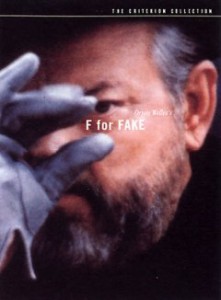
view/request
Join Orson Welles in a one of a kind cinematic experience that examines many shades of the truth. 1973’s F for Fake is presented as an essay film; most definitely the first of its kind. Welles narrates the documentary often on camera with the appearance of a worldly travel host. While delivering literary quotations in a Brechtian style, interviewing subjects and delivering personal tales in his larger than life/life of the party personality, he incorporates a wide range of footage (including bit-lits from his recently abandoned projects) and edits various film formats in dramatic fashion.
At the heart of the movie, Welles discusses the parallels between notorious art forger Elmyr de Hory and the biographer Clifford Irving. Irving who settled in Ibiza working on the de Hory tale, later went on to create a fake of his own: a false biography of Hollywood tycoon Howard Hughes. The director weaves these and other scandals and also shines the light on his infamous War of the Worlds radio broadcast.
Though the content in F for Fake is presented as fact, the masterful Welles, a fan of the slight of hand, cannot resist the urge to play with his audience.
Reviewed by Jason
Tagged: Documentary, Drama
Headquarters
by the Monkees
[Music CD]
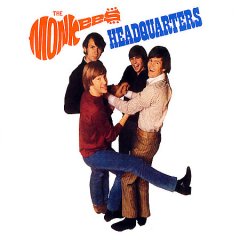
view/request
To earn the Monkees the right to play on their own records, Michael Nesmith’s fist had punch a wall accompanied with the threat “that could’ve been your face”. Thankfully the powers that be relented because Headquarters, the band’s third release, is possibly their most unified, spirited effort.
And now a bit about the personnel… Nesmith handles much of the guitar duties, the classically trained Peter Tork plays keyboards, guitars, basses and banjos, Mickey Dolenz sits behind the drum kit and dabbles on the guitar and Davy Jones shakes a mean tambourine and maraca. All four sing. Producer Chip Talyor plays the occasional bass.
Michael Nesmith, asserting himself as the band’s most prolific songwriter, contributes the twangiest of tunes including “Sunny Girlfriend” and “You Just May Be the One”. Peter Tork writes “For Pete’s Sake”, the groovy number that became the track which rolled over the end credits of the band’s television program. Davy tackles the Hildebrand/Keller number “Early Morning Blues and Green” replete with Wurlitzer electric piano and a wild, distorted organ. Mickey Dolenz sings and writes the psychedelic “Randy Scouse Git” (included on most Monkees “best of” compilations), a song that was inspired by the band’s trip to London and hanging out with the original Fab Four.
Headquarters sounds like a band working together trying to find their sound. It’s garage, it’s pop, it’s joyful.
Reviewed by Jason
Tagged: 1960s rock music, Pop music
How Music Works
by David Byrne
[Book]

view/request
“I think I managed to give a sense that the world of music is wider than my personal experience, but my experience figures in here too”, David Byrne writes about his recent book How Music Works, and this statement gives you a very good idea of what you will find in this very enjoyable book. How Music Works explores the world of music through the experience of one musician’s experiences and wide ranging thoughts. As a result, it is neither a comprehensive book on the nature of music nor a complete biography of its author, though it combines elements of both. Byrne explores the history of music and musical thought, the influence of technology and economics on music, the role of music in society, and the future of the music industry. Along the way we learn much of Byrne’s career, his own approach to music, art, and performance in general.
Byrne is an excellent writer, and a man with wide ranging and interesting ideas. Reading How Music Works is a pleasure, and left me with an increased urge not only to explore more of his music and to read more of his writing (Forbes Library also owns his Bicylce Diaries), but most of all, to make more music of my own. It is, above all, David Byrne’s unending enthusiasm for everyday creativity and for the participation of everyday people in the world of music that will make the greatest impression on you. A great book which will be enjoyed by music lovers of all types.
Reviewed by Ben
Tagged: Music, Non-fiction, Pop music
The Eyre Affair
by Jasper Fforde
[Audiobook]

view/request
The first title in the Thursday Next series, takes us to a slightly different version of Great Britain, around 1985, where time travel is routine, and people have cloned dodo birds has pets. Thursday is a member of Special Operations 27, the literary detective division. Her father is a member of the Chronoguard, and her uncle invents all kinds of interesting devices. Thursday is involved when original manuscripts get stolen, and the story line starts changing. Jane Eyre is kidnapped and Thursday has to enter the novel to try to track down the villain before any lasting harm occurs to the storyline. A love of literature and some acquaintance with Jane Eyre suggested. Surreal and funny with wonderful characters.
Susan Duerden was an engaging reader. 10 discs, 12 hours 15 minutes
Reviewed by Molly
Tagged: Alternative history, Comedy, Fantasy, Fiction
Bobby Charles
by Bobby Charles
[Music CD]
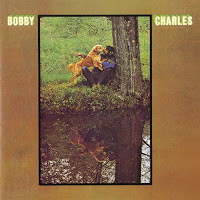
view/request
No album better represents the sound of a bunch of guys hanging out, having good times and recording music than Bobby Charles’s self-titled album. Charles, celebrated for writing “See You Later Alligator” for Bill Haley and “Walking To New Orleans” for Fats Domino, found himself relaxing with The Band in Woodstock, New York in ’71. The circumstances for his east coast residence have something to do with a divorce and hiding out from a Nashville marijuana bust.
The Band (with Dr. John in tow) back Charles through a set of lazy melodies with New Orleans influence and a loose, country bounce. With this all-star line-up, it’s really not a shocker that the backing is as cool as can be. However, it’s Charles’s voice that shines brightest. There is a exceptional fullness and soul in each word that Charles projects and yet he sometimes gives the listener the impression that he’s singing softly, almost narrating a local tale.
The feeling of living out in the country, slowing down and finding peace are intertwining themes throughout Bobby Charles. On “Small Town Talk”, after a whistled intro, Charles croons “and it’s small town talk, you know how people are/they can’t stand to see someone else doing what they want to”. “Tennessee Blues”, the album’s closer, is also no exception to this sensibility. The song is so perfect and timeless, one might imagine Charles ripped it from a book of standards at least 25 years earlier. With one of my all time favorite vocal performances (Doug Sahm’s version is definitely worth hearing as well), Charles sings:
Find me a spot on some mountain top
With lakes all around me
With valley and streams and birds in the trees
And lakes that surround me
A place I feel loose
A place I could lose these Tennessee Blues
Reviewed by Jason
Tagged: Country music, Folk music, New Orleans, Rock music, Soul music
Maigret and the Yellow Dog
by Georges Simenon
[Book]
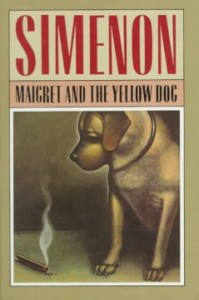
view/request
A wine dealer is shot and wounded via gunfire through a mail slot, traces of poison are found at the Admiral Hotel, a mysterious waitress keeps reintroducing herself as the plot thickens, the footsteps of a giant are discovered, a doctor is having a nervous breakdown behind bars, the mayor is acting rather suspicious, a customs official is shot in the leg and a large, wandering yellow dog is present at the crime scenes. What does it all mean???
Fear not, international mystery fan. The laconic, pipe smoking, French speaking inspector Maigret is on the case!
Reviewed by Jason
Tagged: Fiction, French, Mystery, Police procedural
Dr. John Teaches New Orleans Piano
[DVD]
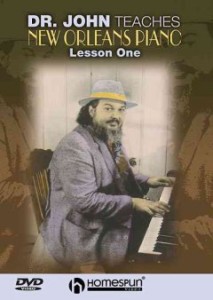
view/request
I didn’t learn to play New Orleans style piano watching this DVD. You might, if you are already a competent pianist, or simply more patient than I am, but this is a rewarding movie whether you intend to become rock and roll pianist or not. Dr. John is an amazing musician; when he plays it looks easy, but just try following along at the piano!
Dr. John looks relaxed (though often worried, as if something else is on his mind). At times he hardly seems to move—but the piano keys move, quickly, and in syncopation, and the music is wonderful. He plays Frankie and Johnnie, C. C. Rider, Blueberry Hill, and others, playing each in some flavor of the New Orleans Rock and Roll, Fats Domino inspired, playing for which he is known. We are given an overhead view of the piano keyboard, as well as a more conventional angle from the side, which lets you really appreciate the fluidity with which the Doctor plays, and is invaluable if you want to try playing his licks yourself. He breaks many of the tunes down, playing the left hand or right hand parts separately, slowing down the tempo, or demonstrating alternative turn around and improvisations. He discusses what riffs are easiest when accompanying your own voice, and briefly describes the interaction between the pianist and the other members of the band.
I really enjoyed this DVD. In fact, I think I’ll probably revisit it in a few months—after I’ve practiced the piano a bit more!
Reviewed by Ben
Tagged: Documentary, Instruction, Music, Rock music
Fifty Sides of the Beach Boys
by Mark Dillon
[Book]
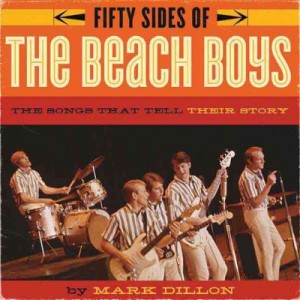
view/request
Mark Dillon’s book is an entertaining look at fifty Beach Boys tunes. The selections are listed chronologically and an admirer (most often a musician) shares a personal memory attached to each song. Some contributors were colleagues and spent time with the guys, others grew up listening to the records. The surviving Beach Boys are also among the fifty selected. In addition to the recollections, Dillon provides historical recording notes, songwriting origins and wonderful Beach Boys factoids.
Memorable bits for me come from the Byrd’s Roger McGuinn on “Don’t Worry Baby”, Beach Boys session player Carol Kaye “California Girls”, actress/musician Zooey Deschanel on “Wouldn’t It Be Nice”, director Cameron Crowe on “Feel Flows” and brief-Beach Boy Blondie Chaplin’s take on “Sail on Sailor”.
Reviewed by Jason
Tagged: 1960s rock music, Biography, Pop music
The long earth
by Terry Pratchett and Stephen Baxter
[Book]

view/request
As a longtime Pratchett fan, I was looking forward to a fantasy full of humor and parody. This isn’t it, but I’ve been drawn in and am still reading. Stephen Baxter is known for his prolific science fiction novels. The Long Earth posits an infinite number of other worlds just like ours, each in its own universe–except they are completely undeveloped by humans. In the very near future, a reclusive scientist develops a way to step between worlds by building a “stepping” box so simple any teenager can make one. Large numbers of people begin popping back and forth, creating complex consequences and changing the world(s) in ways that no one can keep up with. I’m enjoying interesting characters such as 13-year-old Joshua, who is more comfortable in the primordial forest of other Earths than in his hometown of Madison, Wisconsin, and a computer in the shape of a vending machine named Lobsang who claims to be a reincarnated Tibetan motorcycle repairman.
Reviewed by Faith
Tagged: Fiction, Science fiction
Stones for Ibarra
by Harriet Doerr
[Book]
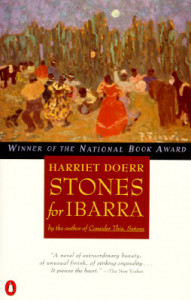
view/request
Stones for Ibarra tells the story of Sara and Richard Everton, who have moved from California to the remote and small village of Ibarra, Mexico to reopen Richard’s grandfather’s copper mine. They have been lured there by photographs and the tales of older relatives: “They have experienced the terrible persuasion of a great-aunt’s recollections and adopted them as their own. They have not considered that memories are like corks left out of bottles. They swell. They no longer fit.” Instead of the beautiful grounds and tennis courts, they come to a house which no longer has shingles and a mine that has been flooded. They persevere, and get the mine up and running, having a large affect on the village and villagers. We learn of Sara’s experience with the villagers, although they always remain slightly apart, and her experience of her husband’s illness.
One of the most remarkable things about this book is that it was published when the author was 73 and won the National Book Award, which means I still have time to publish my own novel!
Reviewed by Molly
Tagged: Fiction, Mexico
Walk Away Renée/ Pretty Ballerina
by The Left Banke
[Music CD]
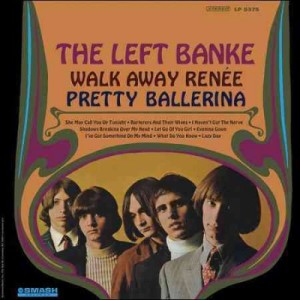
view/request
Fans of The Zombies, The Free Design or The Hollies will most likely enjoy the soft, baroque sounds of The Left Banke. Though the two hits that divide up the album’s title are the obvious stand outs, the entire recording is a strong set of 1960’s magic. The arrangements throughout are harmonically sophisticated and borrow heavily from classical music.
This New York quintet sounds decidedly British and I’d liken Steve Martin Caro’s voice to The Zombies frontman, Colin Blunstone. Both singers have a perfect, gentle tenor with unbelievable range. Martin Caro and many members of the group share songwriting and lead vocal duties. Michael Brown, then a teenager, is responsible for the hits on the record. He managed to compose music that blends youthful angst and longing with haunting melodies.
Other highlights include “I’ve Got Something On My Mind” and “Shadows Breaking Over My Head”, which come close to rivaling the title tracks.
I give this Left Banke album an A+++, eighteen stars, two thumbs up and three golden tickets.
Reviewed by Jason
Tagged: 1960s rock music












